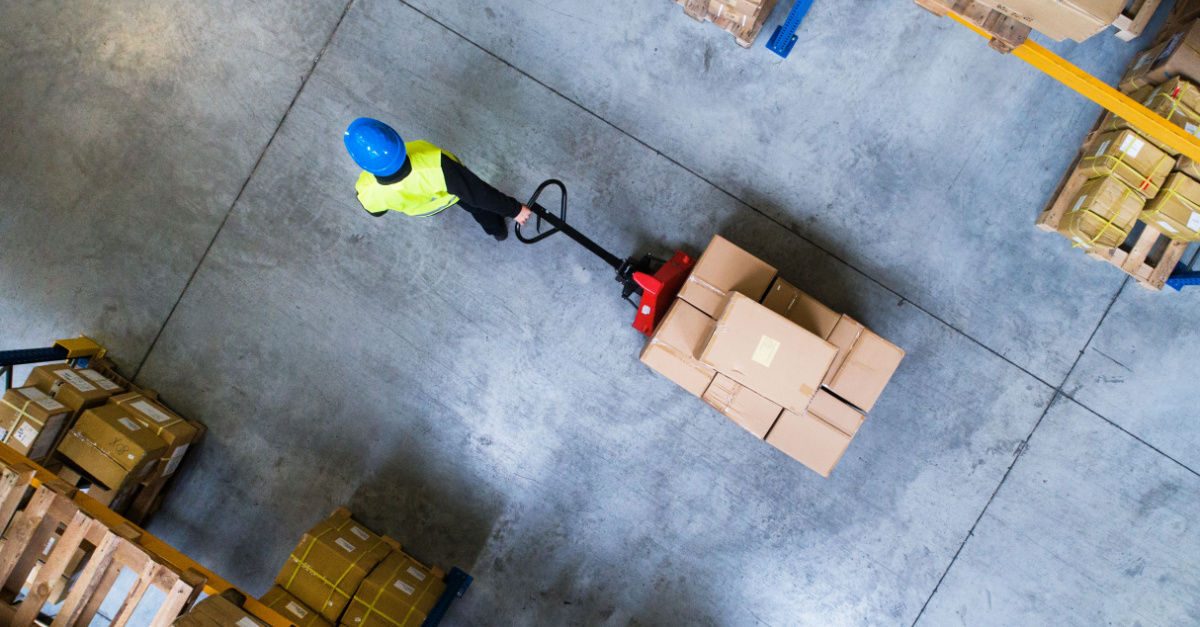

Warehouses can be hazardous. First, the items they hold are stacked high and close together to make the best use of space. Second, a lot of pickers and machinery are going back and forth between the aisles and up and down the storage bins all the time. If the items haven’t been stored properly, if a worker is careless, or if a machine malfunctions, an accident can happen.
To prevent this, there should be strong safety measures and procedures that everyone should follow, and they should be enforced. We’ve honed them down and categorized them into seven main areas.
Dirt, grease, or messes of any kind can be a hazard. Workers could slip on them, and machines could stumble. At the very least, if these obstacles don’t cause a bad accident, they could severely affect workflow in the warehouse.
It’s important, then, for floors and work areas to be kept as clean as possible, which means not just sweeping, but washing them frequently. Any spills should be swept or wiped up immediately; and if any of that spillage could be from harsh chemicals that are being stored, having a special spill kit that can deal with it on hand is imperative.
Hygiene is also a factor to take into account, especially when Covid is still around. Have hand sanitizer prominently placed in several areas, keep all equipment clean, and request that your employees stay home if they feel ill.
While safety training for new employees happens frequently, it’s just as important for existing staff to review safety precautions regularly. Safety training should cover everything from ensuring work spaces and equipment are kept safe to instructions on actions to take when anything goes wrong or an unforeseen emergency happens. Providing training every three or four months is ideal. It’s also a good idea to distribute a safety manual to your workforce.
In addition to making everyone aware of safety in the warehouse, all employees should know what to do in an emergency like a fire or an earthquake. Training and drills should take place on a regular basis. It’s also important to have exit routes clearly marked and accessible at all times and to have enough of them in the building for the size of the space.
Signs that warn about potential hazards are essential. These signs should let employees know where dangerous or inflammable materials are stored, if heavy equipment is nearby, or even which items in storage are heavy. When it comes to the building itself, letting everyone know about design elements that could trip them up, like steps at the end of an aisle, is a good idea.
Since warehouses are more often than not huge spaces in which one section looks the same as another, finding your way can be a challenge in an emergency. To overcome this, there should be large signs with bold lettering that point to emergency exits.
Proper safety gear, like lifting belts, should be provided to ensure your employees’ well-being. Depending on the type of material your workforce has to handle or the conditions they’re working in, other forms of safety equipment, such as respirators or hearing protection, might be needed. Utility knives with protective sheathing and walkie talkies also come under this category, the latter being especially needed in ultra large warehouses.
On a wider level, fire and smoke alarms should be adequately placed, along with fire extinguishers. If your company handles hazardous materials, your fire extinguishers should be the right ones for whatever the materials are. And, of course, first aid kits should be available in easy-to-locate areas.
All safety equipment should be checked regularly.
Here we include safety goggles, safety vests, safety gloves, hard hats and even steel-toe boots. Protective clothing should be a good fit for the individual worker. Loose clothing could get caught in machinery, and a badly fitting hard hat is no use to anyone.
Forklifts and pallet jacks could cause serious injury if not handled correctly or if someone gets in their way. Make sure heavy equipment is only operated by properly trained personnel, and that the equipment has its own pathways in the warehouse. Equipment should be restricted by a speed limit that is enforced.
Warehouses store items on high shelving where they are packed tightly together. To prevent anything from falling and causing injuries, everything should be placed with care, one thing stacked straight on top of another, and heavier pieces should be stored on lower shelves.
When you put recommended safety measures in place, you’re less likely to have downtime caused by injuries. Plus, your workforce will feel much safer.
To optimize warehouse operations even more, there are warehouse management systems (WMS) like Cin7. This software helps organize your warehouse, which helps you maintain a safe working environment.
To find out more about Cin7’s WMS and how it can make your life as a warehouse manager easier, book a free consultation with one of our experts.


There’s more to running a warehouse than just piling inventory on shelves. The design of your warehouse can make or break your overall operational efficiency. Warehouse layouts need to be optimized for clear visibility, smooth transfer of goods, and easy equipment accessibility. And no one design will work for everyone. Most companies use one of […]

When managing a warehouse with thousands of products and having to determine and organize inventory, monitor delivery dates for incoming stock, and ensure the correct delivery schedule, human error is all but certain to occur. Thankfully, new technologies have emerged that are designed to specifically address warehouse management issues. With a comprehensive and an efficient […]

A manufacturer’s inventory is its lifeblood, the basic ingredients for whatever is being made. When it comes to storing materials in the warehouse, there has to be enough materials on hand at all times, and they have to be in good condition. If these requirements aren’t fully met, a factory could shut down. Therefore, managing […]